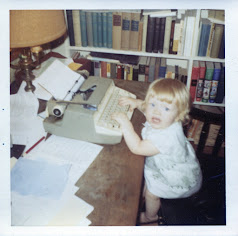The Irish Famine, Great Hunger, Potato Blight, it goes by many names, but until a week ago, I didn't know much more about it than the overwhelming statistics; one million dead, another million lost to emigration, starving farmers dying at the side of the road.
Reading Paddy's Lament, pictured above, has been eye opening for sure. It is a difficult read, something that I think will stay with me for a long time, but important in understanding Donald's ancestors who were children during the worst years of the famine, but most old enough to remember and to carry their trauma to their new life in America.
Last year, while I was trying to verify the information on the Coughlin headstone at Calvary Cemetery, I discovered the 1884 will of John Coughlin, the elder brother of Winifred, Donald's second great-grandmother. It included the following:
Third: I direct that the sum of one thousand dollars be applied by my Executrices towards my funeral expenses & this item is also to include the expense of a tombstone, Requiem Mass and other masses to be said for the repose of my soul after my death, I most earnestly request that my Executrices will obey my wishes in this respect.
Google told me that one thousand dollars in 1884 would be worth almost thirty thousand today. Both Donald and I thought it was an unusually large amount, but didn't think too deeply about it, not thinking that was an answer we were likely to find. After reading Paddy's Lament, I can actually make an educated guess as to why John Coughlin would direct his sisters to spend that amount.
Before the famine, according to this book, funeral expenses were the one thing that Irish peasants would save money for. Tradition called for a casket, a wake, professional keeners and a horse-drawn hearse, but most important was the casket. As the famine wore on and deaths began to outnumber births those savings would likely have been used to buy food or pay rent. Later, wood for caskets became unavailable at any price. Some families broke up wooden furniture to make caskets, some went without and some even used a casket with a drop bottom that could be used over and over. Many people were buried in mass graves, some even in the homes they and their families died in, with the roof brought down and the whole structure set ablaze with the deceased inside.
John Coughlin was born in Ireland in 1833 and I'm sure would have been very aware of these final indignities going on all around him. Having emigrated to America and done well for himself, he earmarked enough money to ensure that he went to his final rest in a dignified manner.
You never know what you might learn about your ancestors when you delve into the events they lived through, and some of it will be tough, but it is always worth pursuing.






No comments:
Post a Comment
If you don't wish to share your email address, please comment anonymously. Thank you.